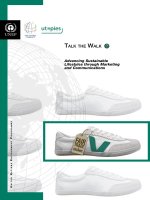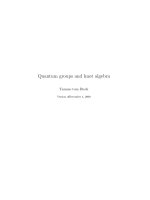quantum computing and communications
Bạn đang xem bản rút gọn của tài liệu. Xem và tải ngay bản đầy đủ của tài liệu tại đây (7.22 MB, 316 trang )
Quantum Computing
and Communications
An Engineering Approach
S
´
andor Imre and Ferenc Bal
´
azs
Both of
Budapest University of Technology and Economics, Hungary
John Wiley & Sons, Ltd
Quantum Computing and Communications
An Engineering Approach
Quantum Computing
and Communications
An Engineering Approach
S
´
andor Imre and Ferenc Bal
´
azs
Both of
Budapest University of Technology and Economics, Hungary
John Wiley & Sons, Ltd
Copyright
c
2005 John Wiley & Sons Ltd,
The Atrium, Southern Gate, Chichester,
West Sussex PO19 8SQ, England
Telephone (+44) 1243 779777
Email (for orders and customer service enquiries):
Visit our Home Page on www.wileyeurope.com or www.wiley.com
All Rights Reserved. No part of this publication may be reproduced, stored in a retrieval
system or transmitted in any form or by any means, electronic, mechanical, photocopying,
recording, scanning or otherwise, except under the terms of the Copyright, Designs and
Patents Act 1988 or under the terms of a licence issued by the Copyright Licensing
Agency Ltd, 90 Tottenham Court Road, London W1T 4LP, UK, without the permission in
writing of the Publisher. Requests to the Publisher should be addressed to the Permissions
Department, John Wiley & Sons Ltd, The Atrium, Southern Gate, Chichester, West Sussex
PO19 8SQ, England, or emailed to , or faxed to (+44) 1243 770571.
This publication is designed to provide accurate and authoritative information in regard to the
subject matter covered. It is sold on the understanding that the Publisher is not engaged in
rendering professional services. If professional advice or other expert assistance is required,
the services of a competent professional should be sought.
Other Wiley Editorial Offices
John Wiley & Sons Inc., 111 River Street, Hoboken, NJ 07030, USA
Jossey-Bass, 989 Market Street, San Francisco, CA 94103-1741, USA
Wiley-VCH Verlag GmbH, Boschstr. 12, D-69469 Weinheim, Germany
John Wiley & Sons Australia Ltd, 33 Park Road, Milton, Queensland 4064, Australia
John Wiley & Sons (Asia) Pte Ltd, 2 C lementi Loop #02-01, Jin Xing Distripark, Singapore
129809
John Wiley & Sons Canada Ltd, 22 Worcester Road, Etobicoke, Ontario, Canada M9W 1L1
British Library Cataloguing in Publication Data
A catalogue record for this book is available from the British Library
ISBN 0-470-86902-X
Typeset in L
A
T
E
X from author-supplied files.
Printed and bound in Germany.
This book is printed on acid-free paper responsibly manufactured from sustainable forestry in
which at least two trees are planted for each one used for paper production.
To my father who taught me the way of thinking and to my mother who showed me how to
endure to the end.
S´andor Imre
P.S. and of course to my children Sanyus, Marci, Orsi, Andris and their mother Adel.
Contents
Preface xiii
How to use this book xv
Acknowledgments xvii
List of Figures xix
Acronyms xxv
Part I Introduction to Quantum Computing
1 Motivations 1
1.1 Life Cycle of a Well-known Invention 1
1.2 What about Computers and Computing? 2
1.3 Let us Play Marbles 5
2 Quantum Computing Basics 7
2.1 Mystery of Probabilistic
√
I Gate 7
2.2 The Postulates of Quantum Mechanics 12
2.3 Qbits and Qregisters 15
2.4 Elementary Quantum Gates 19
viii CONTENTS
2.5 General Description of the Interferom eter 22
2.6 Entanglement 25
2.6.1 A surprising quantum state – entanglement 25
2.6.2 The CNOT gate as classical copy machine and
quantum entangler 26
2.6.3 Bell states 28
2.6.4 Entanglement with the environment –
decoherence 30
2.6.5 The EPR paradox and the Bell inequality 33
2.7 No Cloning Theorem 38
2.8 How to Prepare an Arbitrary Superposition 40
2.9 Further Reading 41
3 Measurements 43
3.1 General Measurements 43
3.2 Projective Measurements 44
3.2.1 Measurement operators and the
3
rd
Postulate
in the case of projective measurement 45
3.2.2 Measurement using the computational basis
states 47
3.2.3 Observable and projective measurement 48
3.2.4 Repeated projective measurement 48
3.2.5 CHSH inequality with entangled particles 49
3.3 Positive Operator Valued Measurement 50
3.3.1 Measurement operators and the
3
rd
Postulate
in the case of POVM 52
3.3.2 How to apply POVM operators 54
3.4 Relations among the Measurement Types 56
3.5 Quantum Computing-based Solution of the Game
with Marbles 57
3.6 Further Reading 59
Part II Quantum Algorithms
4 Two Simple Quantum Algorithms 63
4.1 Superdense Coding 63
4.2 Quantum Teleportation 65
4.3 Further Reading 68
CONTENTS ix
5 Quantum Parallelism 69
5.1 Introduction 69
5.2 Deutsch–Jozsa Algorithm 72
5.3 Simon Algorithm 76
5.4 Further Reading 79
6 Quantum Fourier Transform and its Applications 81
6.1 Quantum Fourier Transform 82
6.2 Quantum Phase Estimation 86
6.2.1 Idealistic phase estimation 86
6.2.2 Phase estimation in practical cases 88
6.2.3 Quantitative analysis of the phase estimator 92
6.2.4 Estimating quantum uncertainty 94
6.3 Order Finding and Factoring – Shor Algorithm 100
6.3.1 Connection between factoring and order
finding 100
6.3.2 Quantum-based order finding 102
6.3.3 Error analysis and a numerical example 107
6.4 QFT as generalized Hadamard transform 111
6.5 Generalizations of order finding 115
6.5.1 Period finding 115
6.5.2 Two-dimensional period finding and discrete
logarithm 116
6.6 Further Reading 119
Part III Quantum-assisted Solutions of Infocom Problems
7 Searching in an Unsorted Database 125
7.1 The Basic Grover Algorithm 126
7.1.1 Initialization – quantum parallelism 126
7.1.2 First stage of
G – the Oracle 128
7.1.3 Second stage of
G – inversion about the
average 129
7.1.4 Required number of iterations 132
7.1.5 Error analysis 135
7.2 Quantum Counting 138
7.2.1 Quantum counting based on phase estimation 138
7.2.2 Error analysis 140
x CONTENTS
7.2.3 Replacing quantum counting with indirect
estimation on
M 145
7.3 Quantum Existence Testing 147
7.3.1 Error analysis 149
7.4 Finding Extreme Values in an Unsorted Database 151
7.5 The Generalized Grover Algorithm 153
7.5.1 Generalization of the basic Grover database
search algorithm 153
7.5.2 Required number of iterations in the
generalized Grover algorithm 157
7.5.3 Design considerations of the generalized
Grover operator 162
7.6 Further Reading 166
8 Quantum-based Multi-user Detection 169
8.1 Introduction to Code Division Multiple Access and
Classical Multi-user Detection 169
8.1.1 DS-CDMA in theory 171
8.1.2 DS-CDMA in practice 172
8.2 Optimal Multi-user Detection 177
8.3 Quantum-based Multi-user Detection 181
8.4 Further Reading 183
9 Quantum-based Code Breaking 185
9.1 Introduction to Cryptology 185
9.2 Symmetric Key Cryptography 187
9.2.1 Large number of users 188
9.2.2 Length of the key and its randomness 189
9.3 Public Key Cryptography 190
9.3.1 The RSA algorithm 192
9.3.2 Digital signatures 193
9.4 Quantum-based Solutions for Breaking Public Key
Cryptosystems 195
9.4.1 Using Grover’s database search algorithm to
break RSA 195
9.4.2 Using Shor’s order finding algorithm to break
RSA 196
9.5 Further Reading 198
CONTENTS xi
10 Quantum-based Key Distribution 201
10.1 The BB84 Protocol 202
10.1.1 Idealistic scenario 202
10.1.2 Eve appears on the scene 204
10.1.3 When the channel introduces errors 205
10.2 The B92 Algorithm 206
10.3 EPR Paradox Based Key Distribution 208
10.4 Teleportation as a Useful Element in Quantum
Cryptography 208
10.5 Further Reading 209
11 Surfing the WEB on Quantum Basis 213
11.1 Introduction to WEB Surfing 213
11.2 Quantum-based Solution of the Guessing Secret
Problem 216
Part IV Appendices
12 Mathematical Background 223
12.1 Basic Probability Theory 223
12.1.1 Characterization of random events 223
12.1.2 Decision theory 225
12.2 Linear Algebra 226
12.2.1 Complex numbers 226
12.2.2 Gaussian elimination 226
12.2.3 Vector spaces 227
12.2.4 Eigenvectors and eigenvalues 230
12.2.5 Special linear operators 230
12.2.6 Operator functions 232
12.3 Number Theory 232
12.3.1 Modular arithmetic 232
12.3.2 Definitions 233
12.3.3 Euclid’s algorithm 234
12.3.4 Continued fraction and convergents 235
12.3.5 Useful theorems 237
xii CONTENTS
13 Derivations Related to the Generalized Grover Algorithm 239
13.1 Eigenvalues of the Generalized Grover Operator 239
13.2 Eigenvectors of the Generalized Grover Operator 241
14 Complex Baseband-equivalent Description of Bandlimited
Signals 245
15 Useful Links 247
References 249
Solutions of Exercises 261
Index 279
Preface
Quantum computing and communications is one of the promising new fields of the
new millennium. This emerging topic has reached the age when not only physicists
and mathematicians but also engineers are becoming more and more interested in
it. This book is based on the first semester of a two-semester subject dedicated to
Ph.D. students and undergraduates in electrical engineering and computer sciences
at Budapest University of Technology and Economics. This first semester covers a
thorough basic introduction to the quantum computing world and discusses quantum-
assisted computing and communications where we use the new paradigm to improve
(assist) the performance of classical systems (e.g. searching in an unsorted database
or strengthening communication security). In addition the second semester deals
with quantum-based communications or more precisely with quantum information
theory (e.g. channel capacity, error correction). After six semesters of experience we
decided to prepare a book which can be used both as lecture notes and as a standalone
learning aid for colleagues with engineering practice.
Although there are several good books on the market none of them has been
written by engineers to engineers. The so-called ‘engineering’ approach has minor
and major differences compared to materials authored by experts of physics, despite
the fact that they cover m ore or less the same topic. As a simple example for the
former category let us mention that engineers use j rather than i to denote the
imaginary part of a complex number. However, it is not only conventions that make
the discussion different. A presented sophisticated solution of a certain problem and
the proof of its correctness do no satisfy an engineer. She/he always wants to know
the way leadin g from the definition of the problem via system model construction
xiv PREFACE
and a logical chain of thoughts before reaching an answer to the original problem.
If this ‘special’ viewpoint is omitted, which happens often when the au thors are
not familiar with engineers’ everyday lives, then it always leaves behind a lack of
completeness.
Another important aspect for engineers can be summarized as the ‘need for
practical applications’. A new theory or even an algorithm in itself has limited
value. One has to prove and show that their implementation constraints, such as
computational complexity, required memory, etc., can be fulfilled in the case of
certain practical applications. Furthermore an unambiguous mapping of theoretical
and real-life parameters has to be provided.
Finally, working as an engineer means the permanent study of the science of
making compromises. The outcome of a design process must be precise enough
and cheap enough and manageable enough and etc. and not the most precise or
the cheapest or the most manageable or etc. Hence error analysis must always be
kept at the focus of investigations.
All these endeavors are motivated by the fact that engineers should learn how
to design new practical solutions. We always have this philosophy in sight when
addressing various topics of quantum computing and communications. Of course
we do not want to rank the engineering approach above those of physicists and
mathematicians, we simply state that they are different (and not better or worse)
in some sense. Due to this fact learning and understanding are much easier if
explanations follow the way we are used to.
From a background mathematics’ point of view we assumed a typical curriculum
of engineers and computer scientists, however, the required math has been
summarized in the appendix.
Because of the limited size of this book there are some aspects that are not
discussed in detail. We did not devote an individual chapter to the implementation
questions of quantum computers. Instead at the end of each chapter in the Further
Reading we give a state-of-the-art survey of the current status of implementation
and provide up-to-date references for interested readers. Philosophical questions and
answers are also beyond the scope of this book but we suggest reading e.g. [84, 145]
if the reader has time and would like to widen his/her knowledge.
Now we invite the reader to join us on the journey which is going to pass
sometimes in teresting, sometimes strange and sometimes challenging lan ds of the
quantum world. Do not hesitate, the new world is waiting for you
The Authors
How to use this book
According to ancient legend, one day Alexander the Great, conqueror of the
‘that time known world’ (Greece, Egypt, Persia), asked Menaikhmos the famous
mathematician to teach him geometry in an easier and faster way. Menaikhmos
smiled at this wish and answered: ‘Oh king, you ordered your engineers to build
distinct roads for citizens and for messengers and the army of the king all around
your empire, but there is only one road for all in geometry!’
1
Basically we agree with Menaikhmos: learning and understanding quantum
computing and communications need time and effort from the reader. However, we
are convinced that if the way the knowledge is served is chosen carefully and fits
more or less to previous studies of the reader, then high spirits can be maintained at
hard portions of the topic. Before starting the voyage we would like to provide some
useful hints and tools similarly to seamen who check their maps and compasses
before sailing out to sea.
This book can be divided logically into three well-defined parts. Part I explains
the basics of quantum computing and communications. As the next level Part II
introduces well-known quantum algorithms while advanced readers can find several
quantum assisted solutions for state-of-the-art infocom problems in Part III. The
book has been equipped with several special features intended to help the reader.
• A dedicated web site can be found at www.mcl.hu/qcc containing useful
information related to this book.
1
The same story is known with Euclid and King Ptolemy.
xvi HOW TO USE THIS BOOK
• All the used notations, acronyms and abbreviations are summarized at the
beginning of this book so that the reader can turn to this list at any time.
• We prepared plenty of exercises from easy to hard-to-answer types, which
allow the reader to test whether his/her understanding is appropriate. The
solutions of exercises can be downloaded from the web site of this book or
a hard copy can be obtained from the publisher. We do not claim, however,
that the p roposed solutions are the simplest and shortest ones. Therefore we
encourage diligent readers to find more attractive solutions and send them to
the authors () in latex format. Appropriate alternatives will
be included with the names of their solver into the solutions file.
• As a life belt the reader may find a summary of corresponding mathematical
background in the appendices.
• In order to allow the reader to widen his/her knowledge beyond the scope and
size of this book a carefully selected large list of references has been attached.
We took special care to choose – if possible – such publications that can be
accessed electronically on the Internet so that the reader may save time (and
money).
• The book is amended with a list containing links to the web pages of the most
important leading institutes and labo ratories where additional information can
be found or even current activities can be followed.
• Obviously the probability of writing a book without any error is fairly low.
Therefore we ask the reader to address any comments or found errata to
the authors (). A regularly updated and downloadable list of
errata is maintained on the book’s web site.
Acknowledgments
The authors gratefully acknowledge the comments and helpful advice of Prof.
Katalin Friedl from the Computer and Automatio n Research Institute of the
Hungarian Academy of Sciences. Pressure from and interest of students attending
the corresponding courses were the most motivating issues that helped u s keep the
deadlines. We thank our boss Prof. Laszl´o Pap for the permanent encouragement and
allowing us enough free time to complete the work.
Certain results introduced in this book were prepared in the frames of OTKA
F042590, COST 289.
List of Figures
1.1 Heron’s ball about 100 B.C. 2
1.2 Moore’s law 4
1.3 Alice and Bob are playing marbles 6
2.1 Scientific model for coin tossing 8
2.2 Scientific model for concatenated coin tossing 9
2.3 Concatenated probabilistic
√
I gates 10
2.4 Implementation of probabilistic
√
I gate – the
half-silvered mirror 11
2.5 Concatenated half-silvered mirrors as identity
transformation 12
2.6 Geometrical visualization of one qbit in the Bloch
sphere 17
2.7 Generalized interferometer 23
2.8 Abstract quantum circuit of the generalized
interferometer 23
2.9 Controlled NOT gate 26
xx LIST OF FIGURES
2.10 SWAP gate made of CNOTs 28
2.11 Bell state generator quantum circuit 29
2.12 Generalized quantum entangler 30
2.13 Quantum COPY machine 39
2.14 Abstract quantum circuit of the generalized
interferometer 41
3.1
P (m =2)and P (m =2)=1vs. α 55
3.2
P (1 ||ϕ
1
) and P (1 ||ϕ
1
)=1vs. α 56
3.3 Implementing general measurement by means of a
projective one 57
3.4 Alice and Bob are playing marbles using quantum
strategy 59
4.1 The superdense coding scenario 64
4.2 The teleportation scenario 67
5.1
f -controlled CNOT gate 70
5.2
f -controlled CNOT gate with N -dimensional control
input implementing parallel evaluation of
f 71
5.3 Quantum architecture for solving the Deutsch–Jozsa
problem 74
5.4 Quantum architecture for solving Simon’s problem 76
6.1 Sketch of QFT circuit 84
6.2 Circuit of
U
n−1
85
6.3 Quantum circuit implementing QFT 85
6.4 Quantum circuit producing
|µ
n
87
6.5 Quantum circuit computing the phase 88
6.6 Illustration of probability amplitude regions before
measurement with different index transformations 90
6.7
log
10
(P (h)) in case c =10,p=4and α
u
=0.4π 94
6.8
log
10
(P (h)) in case c =10and α
u
=0.4 · 2π when p
varies between 0 and 10 95
LIST OF FIGURES xxi
6.9 P
s
vs. p in case c =10and α
u
=0.4 · 2π 95
6.10
log
10
(|∆
u
|) vs. p in case c =10and α
u
=0.4 · 2π 96
6.11 Trade off between
c and p at fixed n =10 96
6.12
P
s
vs. c and ∆
u
if p =0 97
6.13 Quantum error probability
log
10
(
˘
P
ε
) vs. number of
required additional qbits
p 99
6.14 Quantum circuit implementing order finding 103
6.15
P (i) assuming n =11,N =33,x=5,r =10 112
6.16
log
10
(P (i)) assuming n =11,N =33,x=5,r =10 112
6.17 Deutsch–Jozsa circuit as a decision maker whether
f
is constant or varying 113
6.18 Deutsch–Jozsa circuit as a simple phase estimator 114
6.19 Period-finding quantum circuit over
Z
N
116
6.20 Two-dimensional period-finding quantum circuit 118
7.1 Circuit implementing the Grover operator 127
7.2 Probability amplitude distribution of the index register
at
|ϕ
1
127
7.3 Content of qregister
|γ
2
after invoking the Oracle 128
7.4 Effect of inversion about the average
a 130
7.5 Geometrical interpretation of the Grover operator 133
7.6 Explanation of the decision about the number of
iterations 135
7.7
P
ε
,P
s
,
˜
P
ε
and
˜
P
s
vs.
M
N
137
7.8 Quantum counting circuit 139
7.9
Ω
γ
(M), Ω
γ+
(M), Ω
γ−
(M) vs. q if M = 1024 and N = 4096 141
7.10
c(M,q) (assuming equality in the definition) vs. q if
M =1, 4, 64, 2048 and N = 4096 141
7.11 Connection between
M and q assuming system
parameters
˘
P
ε
=0.1 and 2N = 4096 144
7.12 Quantum circuit for searching in an unsorted database 145
xxii LIST OF FIGURES
7.13 Optimal number of rotations L vs. M
max
if N = 4096 147
7.14 Optimized expected total number of Grover operators
E(z|L) vs. M
max
if N = 4096 with
√
N and
N/M
max
as
references 148
7.15 The matching condition between
φ and θ with and
without correction assuming
Ω=0.5,
Ω
γ
2
=0.0001,
Λ
γ
=0.004, Λ=0.004 161
7.16 Geometrical interpretation of the generalized Grover
iteration 162
7.17 Different possible interpretations of
|γ
1
163
7.18
Υ vs. θ assuming Ω=0.5,
Ω
γ
2
=0.0001, Λ
γ
=0.004,
Λ=0.004 163
7.19 Number of iterations
l
s
vs. θ assuming the matching
condition is fulfilled and
Ω=0.0001,
Ω
γ
2
=0.0001,
Λ
γ
=Λ=0 165
8.1 Idealistic DS-CDMA architecture 172
8.2 Sequences, modulation and detection in DS-CDMA 173
8.3 Separation in the detector 173
8.4 Mobile access directions 174
8.5 Detection in the case of delayed signal 175
8.6 DS-CDMA transmitter and channel 175
8.7 Single-user DS-CDMA detector with matched filter,
idealistic case 178
8.8 Multi-user DS-CDMA detector 179
8.9 System concept of quantum counting-based multi-user
DS-CDMA detector 183
8.10 The structure of the index register 183
9.1 Basic concept of secure information transfer 187
9.2 Basic concept of symmetric key cryptosystems 188
9.3 Symmetric key cryptosystem in a public mobile
network 189
9.4 Encryption with key generator 190
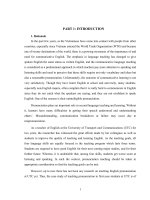
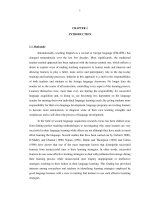


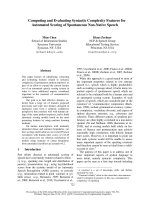
![Matrix quantum mechanics and 2 d string theory [thesis] s alexandrov](https://media.store123doc.com/images/document/14/rc/ya/medium_8kAdgQLKd0.jpg)


